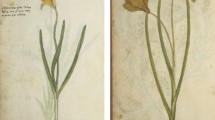Abstract
As mentioned above, as early as in 1833, Link found a wild plant similar to T. monococcum in the Balkans and Asia Minor. He named it as Crithodium aegilopoides Link. In 1854, Balansa found the same wild wheat in Mt. Sipylus, Syria, Iraq, and Iran in Asia Minor. They were merged into Triticum and changed to T. aegilopoides (Link) Bal. E. Boissier (1853) named the specimen collected from Boeotia Plain as T. boeoticum Boiss. In fact, they were the same species. T. aegilopoides (Link) Bal. was also the same name as T. aegilopoides Forssk. that was earlier published by Forsskål P. According to plant nomenclature rules, T. aegilopoides (Link) Bal. should be abandoned and T. boeoticum Boiss. should be the valid name of the wild wheat. In 1855, Kotschy discovered the wild barley Hordeum spontaneum in Mount Hermon, Palestine. Kärnicke found that partial spikes in the specimen belonged to another wild wheat species that was named as T. dicoccoides Körn (1873). It also attracted the attention of agronomists because it was similar to the cultivated species T. dicoccon Schrank. Aaronsohn made a special investigation in 1904. At first, he did not find the wild wheat near Mt. Hermon. However, in 1906, he rediscovered the plant at 1900 m above sea level in Hermon and the Jordan Valley. In 1910, Cook discovered that this species was sporadically distributed in rock crevices on the slopes of Mount Anti-Lebanon in the limestone savanna eco-environment. Later, it was also discovered in Syria, Armenia, the Transcaucasus, and Western Iran. Compared to T. dicoccoides, the distribution of T. boeoticum was wider, including the Balkans, Asia Minor, Crimea, the Transcaucasus, Palestine, Syria, Iraq, and most parts of Iran, where the eco-geographic types vary somewhat. Reuter divided it into two species according to spikelets with one or two long awns. He designated the species with two long awns as T. thaoudar Reuter. However, Schiemann (1932) considered that it could only belong to a taxon class of subspecies.
Access provided by Autonomous University of Puebla. Download chapter PDF
Similar content being viewed by others
As mentioned above, as early as in 1833, Link found a wild plant similar to T. monococcum in the Balkans and Asia Minor. He named it as Crithodium aegilopoides Link. In 1854, Balansa found the same wild wheat in Mt. Sipylus, Syria, Iraq, and Iran in Asia Minor. They were merged into Triticum and changed to T. aegilopoides (Link) Bal. E. Boissier (1853) named the specimen collected from Boeotia Plain as T. boeoticum Boiss. In fact, they were the same species. T. aegilopoides (Link) Bal. was also the same name as T. aegilopoides Forssk. that was earlier published by Forsskål P. According to plant nomenclature rules, T. aegilopoides (Link) Bal. should be abandoned and T. boeoticum Boiss. should be the valid name of the wild wheat. In 1855, Kotschy discovered the wild barley Hordeum spontaneum in Mount Hermon, Palestine. Kärnicke found that partial spikes in the specimen belonged to another wild wheat species that was named as T. dicoccoides Körn in 1873. It also attracted the attention of agronomists because it was similar to the cultivated species T. dicoccon Schrank. Aaronsohn made a special investigation in 1904. At first, he did not find the wild wheat near Mt. Hermon. However, in 1906, he rediscovered the plant at 1900 m above sea level in Hermon and the Jordan Valley. In 1910, Cook discovered that this species was sporadically distributed in rock crevices on the slopes of Mount Anti-Lebanon in the limestone savanna eco-environment. Later, it was also discovered in Syria, Armenia, the Transcaucasus, and Western Iran. Compared to T. dicoccoides, the distribution of T. boeoticum was wider, including the Balkans, Asia Minor, Crimea, the Transcaucasus, Palestine, Syria, Iraq, and most parts of Iran, where the eco-geographic types vary somewhat. Reuter divided it into two species according to spikelets with one or two long awns. He designated the species with two long awns as T. thaoudar Reuter. However, Schiemann (1932) considered that it could only belong to a taxon class of subspecies.
References
Boissier, E. (1853). Diagnoses, ser. I. Vol. 2. fasc, 13: 69.
Schiemann, E. (1932). Entstehung der kulturpflanzen. Handbuch der Vererbungswissenschaft. 3. L. Berlin.
Author information
Authors and Affiliations
Rights and permissions
Copyright information
© 2020 China Agriculture Press & Springer Nature Singapore Pte Ltd.
About this chapter
Cite this chapter
Yen, C., Yang, J., Yuan, Z., Ning, S., Liu, D. (2020). Discovery of Wild Triticum Species. In: Biosystematics of Triticeae. Springer, Singapore. https://doi.org/10.1007/978-981-13-9931-2_3
Download citation
DOI: https://doi.org/10.1007/978-981-13-9931-2_3
Published:
Publisher Name: Springer, Singapore
Print ISBN: 978-981-13-9930-5
Online ISBN: 978-981-13-9931-2
eBook Packages: Biomedical and Life SciencesBiomedical and Life Sciences (R0)




